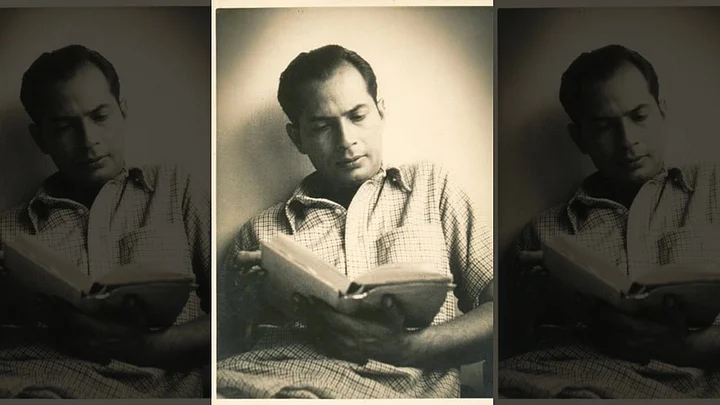Bimal Roy was a pioneer who brought realism in the realm of mainstream Hindi cinema. In many ways, he reflected the romantic idealist struggling with the unforgiving realities of Nehruvian India. His filmography never succumbed to the aura of stars, and his characters sparkle with humanism, giving his films an enduring eminence.
On his birth anniversary, here’s a little peek into what made Bimal Roy the legendary director who still lives amongst us through his pictures.
1. Worked With Leftover Reels

Filmmaker Bimal Roy
(Photo Courtesy: Twitter/glamsham)
At the start of his career, Bimal Roy worked as a cameraman in Calcutta for New Theatres Studio. Since he was itching to don the director’s hat, he met with the studio owner B. N. Sircar and requested his permission. Sircar agreed, but on one condition – Roy could only use leftover reel from other films. Roy actually took up the challenge, and made the film with only cut pieces of leftover reel. The year was 1944 and the film, Udayer Pathe, went on to become a smash hit despite having rank newcomers. Roy later remade it in Hindi as Humrahi.
2. Used Jana Gana Mana Before It Became Our National Anthem
Bimal Roy used Rabindranath Tagore’s ‘Jana Gana Mana’ evocatively in Udayer Pathe and the Hindi version, Humrahi, much before it even became the national anthem of the country in 1950.
3. Inspired By Rashomon

Akira Kurosawa’s Rashomon is partially responsible for the formation of Bimal Roy Productions. After watching the film at Eros Cinema in Bombay, Bimal Roy and some of his team members, including Hrishikesh Mukherjee, were returning to Malad in a double-decker BEST bus. The film left them so awestruck that Mukherjee actually asked Roy about the possibility of making such a film.
Roy wondered where he would find a writer of such calibre when Mukherjee promptly offered to do the job. All the unit members too decided that they would have a share in the production company. That’s how Bimal Roy Productions came to life inside a bus.
4. The Sujata Shot

In Sujata, there is a sequence in which Adhir (Sunil Dutt) tells Sujata (Nutan) in the greenhouse that the main purpose of his visit is to see her, which makes her turn with the closing of Lajwanti (Mimosa) leaves. This scene has an interesting history. Roy shot the scene for four days, filming it over and over, to depict the blushing Sujata through the leaves. Only on the fourth day, when a huge propeller fan was put to use, the leaves finally closed.
By then, 50,000 feet of film was used. When it was handed over to editor Amit Bose, he had to bring to life a scene lasting barely a minute and a half from 50,000 feet! When Bose’s efforts verged on despair, Roy along with his assistant Sakharam cut the sequence in less than two days.
5. Made Balraj Sahni Cry

In the last shot of Do Bigha Zameen, Balraj Sahani’s Shambu was supposed to sit on his hunches, clutch the zamindar’s (played by Murad) feet and beg for his piece of land. Director Bimal Roy secretly told Murad to jerk his feet off Sahni’s grip, and then remove himself from the range of the camera — a fact Sahni wasn’t aware of. During the take, however, Murad’s foot landed on Sahni’s face with a thud. Insulted and hurt, Sahni was sobbing after the cut. Murad came running, apologised, took Sahni in his arms, and narrated the back story. The shot came out terrific, and Roy rose in Sahni’s eyes even more.
(The writer is a journalist and a screenwriter who believes in the insanity of words, in print or otherwise. His Twitter handle is: @RanjibMazumder)
(This piece is from The Quint’s archives and was first published on 8 January, 2016. It is being republished on his birth anniversary.)
(At The Quint, we are answerable only to our audience. Play an active role in shaping our journalism by becoming a member. Because the truth is worth it.)
